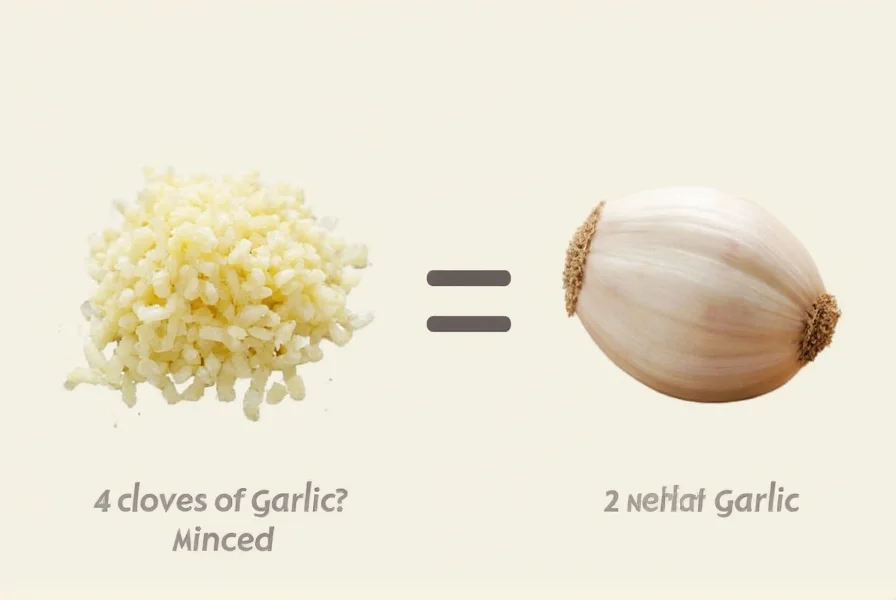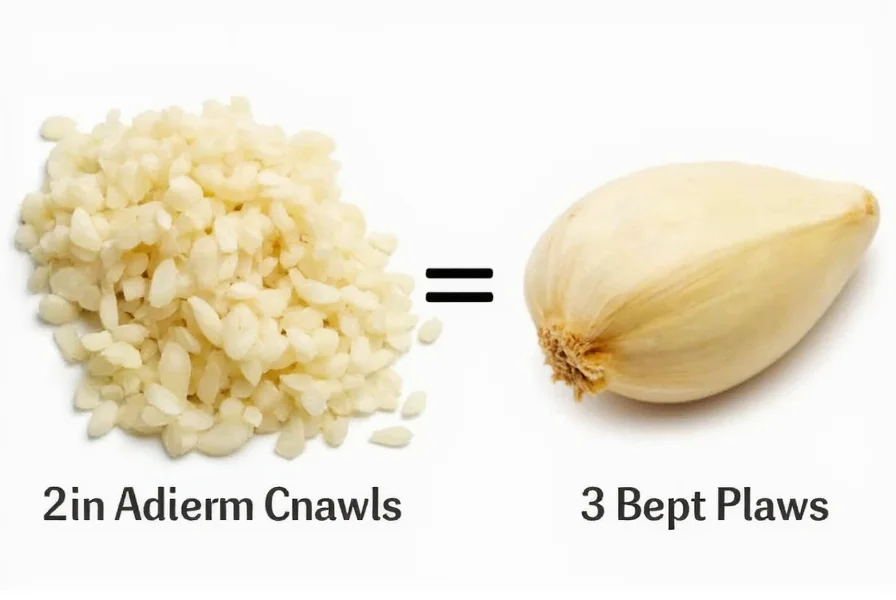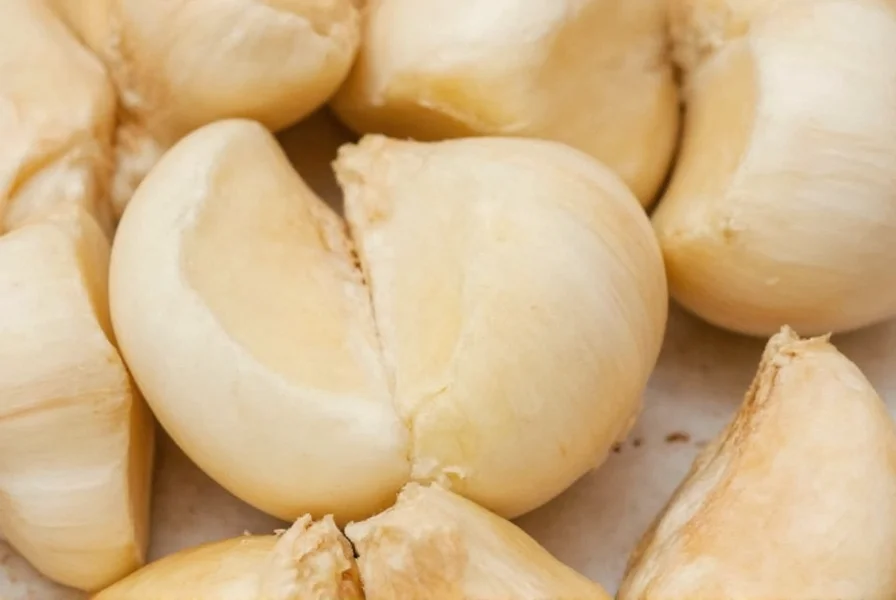Understanding garlic measurements is essential for precise cooking. When a recipe calls for minced garlic but you only have whole cloves (or vice versa), knowing the exact conversion ensures your dishes turn out perfectly every time. This guide provides accurate measurements, practical tips, and a helpful reference chart for all your garlic-related cooking needs.
Garlic Measurement Fundamentals
Garlic measurements can vary slightly based on clove size and preparation method. Standard medium garlic cloves yield consistent results when properly minced. The texture of your minced garlic significantly impacts volume—finely minced garlic packs more densely than roughly chopped pieces.
| Whole Garlic Cloves | Minced Garlic Equivalent | Garlic Paste Equivalent |
|---|---|---|
| 1 clove | 1 teaspoon | 1/2 teaspoon |
| 2 cloves | 2 teaspoons | 1 teaspoon |
| 3 cloves | 1 tablespoon | 1 1/2 teaspoons |
| 6 cloves | 2 tablespoons (1/8 cup) | 1 tablespoon |
| 12 cloves | 1/4 cup | 2 tablespoons |
Factors Affecting Garlic Conversions
Several variables influence the precise conversion between whole cloves and minced garlic:
- Clove size: Garlic cloves vary from small (about 1/2 inch) to jumbo (over 1 inch). Standard recipes assume medium cloves.
- Preparation technique: How finely you mince affects volume—finer mince yields slightly less volume than coarse mince.
- Moisture content: Freshly minced garlic contains more moisture than pre-minced jarred varieties.
- Packing: Whether you lightly spoon or firmly pack minced garlic changes the measurement.

Practical Cooking Applications
When substituting between whole cloves and minced garlic, consider these professional kitchen tips:
For most savory dishes, maintaining the proper garlic-to-ingredient ratio prevents overpowering flavors. When converting recipes, remember that freshly minced garlic delivers more vibrant flavor than jarred alternatives. If using pre-minced garlic from a jar, reduce the quantity by 25% since commercial products often contain preservatives that intensify the flavor.
When roasting garlic, the conversion changes significantly—roasted cloves become softer and yield less volume when mashed. Two roasted cloves typically equal 1-1.5 teaspoons of roasted garlic paste.
Avoiding Common Measurement Mistakes
Cooks frequently make these errors when working with garlic measurements:
- Not accounting for clove size variations in different garlic heads
- Using heaping teaspoons instead of level measurements
- Substituting garlic powder using the same volume (1/8 teaspoon garlic powder equals one clove)
- Not adjusting for recipe type—delicate sauces need more precise measurements than robust stews
For critical recipes like aioli or garlic-infused oils, weighing your garlic provides the most accurate results. One medium garlic clove weighs approximately 3-7 grams depending on size.

Garlic Substitution Guide
Understanding alternative garlic forms helps when you don't have fresh cloves available:
- Garlic powder: 1/8 teaspoon equals one clove (use sparingly as it's concentrated)
- Garlic salt: 1/4 teaspoon equals one clove (reduce additional salt in recipe)
- Garlic paste: 1/2 teaspoon equals one clove (check for added ingredients)
- Garlic flakes: 1/2 teaspoon equals one clove (reconstitute with water)
When converting between fresh and preserved garlic forms, remember that fresh garlic provides brighter, more complex flavors while preserved options offer convenience with slightly different flavor profiles.
Professional Kitchen Insights
Experienced chefs recommend these techniques for perfect garlic measurements every time:
- Always mince garlic just before use for maximum flavor retention
- Use a microplane for ultra-fine mince that measures more consistently
- For critical recipes, weigh garlic instead of measuring by volume
- When doubling recipes, don't automatically double garlic—flavor compounds don't scale linearly
- Store unused minced garlic in a small amount of olive oil to prevent browning
Understanding that 2 cloves of garlic equals 2 teaspoons of minced garlic forms the foundation for successful recipe adaptation. This knowledge empowers home cooks to confidently adjust recipes based on available ingredients while maintaining proper flavor balance.
Frequently Asked Questions
How much jarred minced garlic equals 2 fresh cloves?
When substituting jarred minced garlic for fresh, use 1.5 teaspoons instead of 2 teaspoons. Commercial minced garlic contains preservatives that intensify the flavor, so you'll want to reduce the amount by about 25% to achieve equivalent taste without overpowering your dish.
Does the size of garlic cloves significantly affect the minced measurement?
Yes, clove size dramatically impacts the conversion. Small cloves may yield only 3/4 teaspoon when minced, while jumbo cloves can produce up to 1.5 teaspoons. For critical recipes, count the cloves rather than relying solely on volume measurements, or weigh the garlic (medium cloves weigh 3-7 grams each) for precision.
Can I use garlic powder instead of minced garlic in recipes?
Yes, but with significant adjustments. Substitute 1/4 teaspoon garlic powder for 2 cloves of minced garlic (2 teaspoons). Garlic powder is much more concentrated, so using equal volume would create an overpowering flavor. Always add powder early in cooking to allow flavors to mellow, and reduce additional salt since garlic powder often contains salt.
How do I convert roasted garlic cloves to minced measurements?
Roasted garlic yields less volume than raw garlic due to moisture loss. Two roasted garlic cloves equal approximately 1-1.5 teaspoons of roasted garlic paste. The exact amount depends on roasting time and temperature—longer roasting creates more concentrated flavor with less volume. For precise recipes, weigh the roasted cloves (typically 2-4 grams each after roasting).











 浙公网安备
33010002000092号
浙公网安备
33010002000092号 浙B2-20120091-4
浙B2-20120091-4